Web Smarts - Business Savvy
We’ve been building websites since 1998
We are trusted advisors to Over 50 Active Clients within several industries including associations and nonprofits, healthcare, financial services, retail, B2B and more.

We Are
Trusted
Partners
After we deliver a quality website on time and within your budget, we will be there for when it really counts. We will be proactive, consultative and strategic after we launch your website.

We Are
Integration
Experts
We’ve integrated with virtually every AMS system on the market as well as most LMS, publication, advocacy and career center applications. Our company was founded on custom development.

We build websites that are easy to edit, manage and design using the best content management system on the market, Sitefinity CMS.
We Provide A Full Spectrum Of Services
Our Clients Are Our Partners....
John Wurm

The team at Vanguard helped us think about our digital presence from the perspective and needs of our users, while holding true to the values our organization espouses.
Connect With Us
Improve Your Webcopy

The
Vanguard View
Technology articles about one topic from the perspective of Leadership, Marketing and IT professionals .
The Technicalities of Dynamic Content
Dynamic content has changed the content management world. The phrase Dynamic Content simply means the ability to change function and structure. The ability to show different text and views (how that text is displayed) is dynamic content. This is not to be confused with personalization. Content that changes based on a user’s location or other characteristics known about that user is considered personalization. While personalization is form of dynamic content, what this article looks to describe is a widget within a content management system that a website’s administrator can modify to display content.
Benefits of Using a CMS
A content management system (CMS) is a software application that can be used to manage the creation and modification of digital content. The major benefit to using a CMS to manage the content on your website is that you do not need to know HTML, CSS, or other languages to change the content on your website. CMSs are graphical interfaces that is accessed through a browser and is only accessible to those with a login. “Sitefinity” is one such CMS which allows Vanguard clients to update content on their own.
Content Types
Sitefinity comes with predefined content types. You can create a Blog type, News article, Event, Forum and more. Some widgets, like Forums and Blogs, have a hierarchical structure. This means you, as the content creator, must create a Blog before creating articles within that blog. A Forum must be created before you create a forum thread and so on. Each content type has its predefined fields. Each of the predefined types come with a field for title and a place to store content i.e., information in the form of text with or without HTML. Events contains date fields and a calendar. News articles contain fields for author, source and URL.
Sometimes, you may need a field in one of these content types that doesn’t currently exist. For example, the “News” content type does not have a field for a featured image by default. Luckily, Sitefinity will allow you to create custom fields to add to any content type. If all that was required was an image to the news article, then I would add a custom field. However, if I needed an image and a calendar and some other field then you should consider creating a dynamic content Item. The truth is, when more than one custom field is required, the original type is not really that type any longer. With Sitefinity Content Management System you can create your very own custom “Content Type”.
Controls and Modules
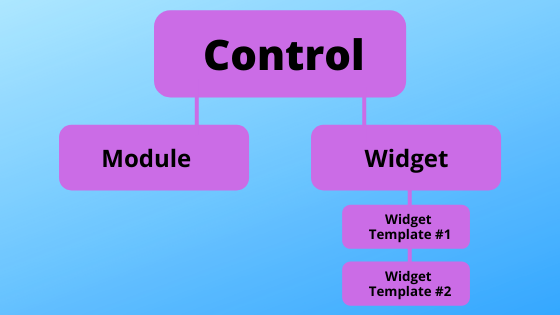
Within Sitefinity, you can easily organize and customize content using controls, modules and widgets. If you want to create a self-contained new content type, we create a control.
A "Control" is the embodiment of how content for that content type is entered, displayed, and functions (essentially, how the content type works). A control is made up of a “module” and a “widget”.
A module is a part of the control and is made up of different fields to customize what will be in that content type. The website administrator fills out a form to create an item of content for that content type, or control. The content that is entered lives within the control.
A widget is a configurable container that houses a type of content. Widgets are user-friendly and are the tools you will find yourself using often. It is up to the configuration of a widget to decide what content items to display to your users. For example, if you wanted a page to only display blogs articles from the “Board of Directors Blog,” but not all blogs, you would add a blog widget to the page. This widget only pulls content from the blog control (which you entered earlier through the blog module). You can change the settings of the widget on that page to only display items by certain criteria (In this example, being “Board of Directors”). You may have one widget template that only list the blog posts’ title, author, and short description and another widget template, while pulling the same articles, may display the same title, featured image, and posting date. As you can see, you have the freedom to display anything you choose to.
Using Widgets
Content is added to a page by dragging widgets in the places you want the content to appear. The content in these widgets are reusable, can be displayed on more than one page, and others can view, edit and publish it easily. This is done using widget templates. Widget templates enable you to style these widgets, so you can easily drag and drop them on any page across your site, and it will appear using that same style.
Where do you begin?
First, you must define all fields the module will contain. You must define if the items will have a hierarchical structure or not. Once you have all the details on what the content will contain and how it is going to be structured, we can begin creating the custom content type.
This is a game changer. No matter what need, you have a model can be created that will represent it. Sitefinity creates controls which allows you to just drop the control on a page.
Creating More Complex Content Types
A more detailed example is a staff directory. To create the module, we want these fields. Name, Address, Biography and Image. Once created we have two widget templates created for us. A listing view and a details view. We drop the listing view on a page. We set the listing view to only display the Name and image. Both fields are hyperlink which will auto generate the details view. When on the details view the user will see all four fields. Keep in mind that you do have to create each staff members. You can now have anyone create the content and you never have to change the page data.
Get Creative!
The opportunities are endless when it comes to creating custom and dynamic content types within a CMS like Sitefinity. Although Sitefinity is programmed with many existing content types, you must remember that everything can be customized, and you are not limited to certain fields within each content type. With this creative freedom, your desired functionality of your website content is literally at your fingertips!
Vanguard Tips & Tricks
We provide helpful hints you never knew you needed for our clients. Check out "Vanguard Tips & Tricks" to learn quick and simple hacks to make managing your website easier than ever.
The Technicalities of Dynamic Content
Dynamic content has changed the content management world. The phrase Dynamic Content simply means the ability to change function and structure. The ability to show different text and views (how that text is displayed) is dynamic content. This is not to be confused with personalization. Content that changes based on a user’s location or other characteristics known about that user is considered personalization. While personalization is form of dynamic content, what this article looks to describe is a widget within a content management system that a website’s administrator can modify to display content.
Benefits of Using a CMS
A content management system (CMS) is a software application that can be used to manage the creation and modification of digital content. The major benefit to using a CMS to manage the content on your website is that you do not need to know HTML, CSS, or other languages to change the content on your website. CMSs are graphical interfaces that is accessed through a browser and is only accessible to those with a login. “Sitefinity” is one such CMS which allows Vanguard clients to update content on their own.
Content Types
Sitefinity comes with predefined content types. You can create a Blog type, News article, Event, Forum and more. Some widgets, like Forums and Blogs, have a hierarchical structure. This means you, as the content creator, must create a Blog before creating articles within that blog. A Forum must be created before you create a forum thread and so on. Each content type has its predefined fields. Each of the predefined types come with a field for title and a place to store content i.e., information in the form of text with or without HTML. Events contains date fields and a calendar. News articles contain fields for author, source and URL.
Sometimes, you may need a field in one of these content types that doesn’t currently exist. For example, the “News” content type does not have a field for a featured image by default. Luckily, Sitefinity will allow you to create custom fields to add to any content type. If all that was required was an image to the news article, then I would add a custom field. However, if I needed an image and a calendar and some other field then you should consider creating a dynamic content Item. The truth is, when more than one custom field is required, the original type is not really that type any longer. With Sitefinity Content Management System you can create your very own custom “Content Type”.
Controls and Modules

Within Sitefinity, you can easily organize and customize content using controls, modules and widgets. If you want to create a self-contained new content type, we create a control.
A "Control" is the embodiment of how content for that content type is entered, displayed, and functions (essentially, how the content type works). A control is made up of a “module” and a “widget”.
A module is a part of the control and is made up of different fields to customize what will be in that content type. The website administrator fills out a form to create an item of content for that content type, or control. The content that is entered lives within the control.
A widget is a configurable container that houses a type of content. Widgets are user-friendly and are the tools you will find yourself using often. It is up to the configuration of a widget to decide what content items to display to your users. For example, if you wanted a page to only display blogs articles from the “Board of Directors Blog,” but not all blogs, you would add a blog widget to the page. This widget only pulls content from the blog control (which you entered earlier through the blog module). You can change the settings of the widget on that page to only display items by certain criteria (In this example, being “Board of Directors”). You may have one widget template that only list the blog posts’ title, author, and short description and another widget template, while pulling the same articles, may display the same title, featured image, and posting date. As you can see, you have the freedom to display anything you choose to.
Using Widgets
Content is added to a page by dragging widgets in the places you want the content to appear. The content in these widgets are reusable, can be displayed on more than one page, and others can view, edit and publish it easily. This is done using widget templates. Widget templates enable you to style these widgets, so you can easily drag and drop them on any page across your site, and it will appear using that same style.
Where do you begin?
First, you must define all fields the module will contain. You must define if the items will have a hierarchical structure or not. Once you have all the details on what the content will contain and how it is going to be structured, we can begin creating the custom content type.
This is a game changer. No matter what need, you have a model can be created that will represent it. Sitefinity creates controls which allows you to just drop the control on a page.
Creating More Complex Content Types
A more detailed example is a staff directory. To create the module, we want these fields. Name, Address, Biography and Image. Once created we have two widget templates created for us. A listing view and a details view. We drop the listing view on a page. We set the listing view to only display the Name and image. Both fields are hyperlink which will auto generate the details view. When on the details view the user will see all four fields. Keep in mind that you do have to create each staff members. You can now have anyone create the content and you never have to change the page data.
Get Creative!
The opportunities are endless when it comes to creating custom and dynamic content types within a CMS like Sitefinity. Although Sitefinity is programmed with many existing content types, you must remember that everything can be customized, and you are not limited to certain fields within each content type. With this creative freedom, your desired functionality of your website content is literally at your fingertips!
Case Studies
Vanguard conducts thorough preliminary investigative work to ensure your website is built to cater specifically to your target audience and meet your organization’s goals. Check out some of the case studies on some of our most recent client success stories.
What Can Vanguard Do For You?
As your organization grows and evolves, your website should as well. Whether you are looking to generate more traffic, implement custom functionality, mobile compatibility, integrate your systems, or give your site a complete redesign, Vanguard Technology is your go-to web partner. Reach out to us with your current concerns with your website, and our experts will happily provide a solution.






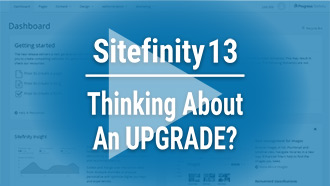
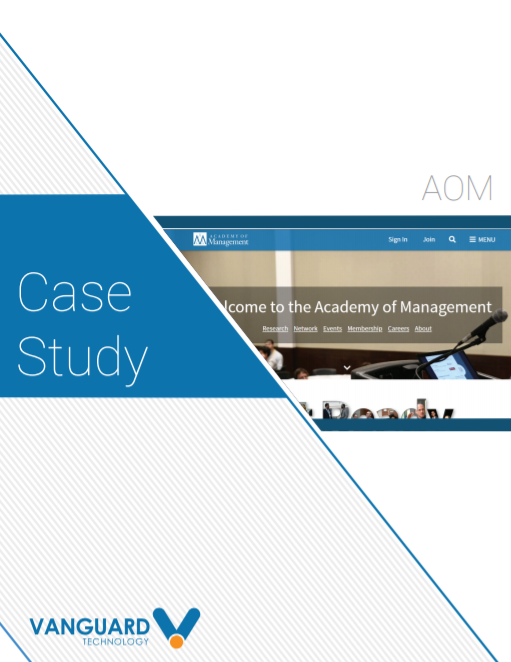
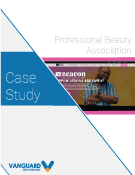
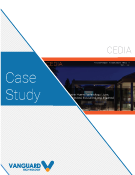
Leave a commentOrder by
Newest on top Oldest on top